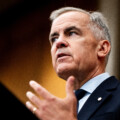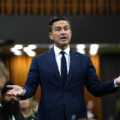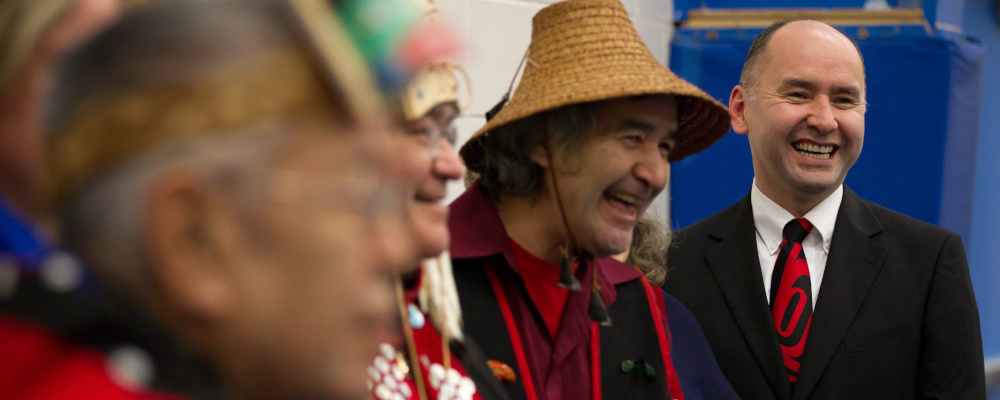The Aristotle Foundation for Public Policy is a new policy think tank focused on Canadian civil society, democracy, and the country’s foundational ideas and values. Its first major output is an essay compilation entitled The 1867 Project: Why Canada Should be Cherished—Not Cancelled. The Hub is pleased to publish weekly excerpts from the book’s essays over the coming weeks.
Reflecting on the evolution of federal policy, it should be obvious in the third decade of the 21st century that one significant mistake made by the federal government in history was to federalize every issue involving Indigenous peoples.
For better or worse, the British set out on the federalizing policy path starting with the Royal Proclamation of 1763 which determined that the Indigenous inhabitants of this land would be treated as collectives and negotiated with through signed treaties that set out rights and responsibilities. From the start, though, it was the central government and it alone that dealt with First Nation communities.
As with most top-down approaches that exist far from local conditions, Indigenous policy in Ottawa became rigid and inflexible in meeting changing needs and circumstances. It forced onto Indigenous people a “one-size fits all” system of governance. Not only this, but the Indian Act did not keep up with the rapidly evolving changes taking place in Canada.
For example, as provinces began to create education and health care systems, First Nations on reserve found themselves islands of federal jurisdiction within the provinces. Programs and services delivered by local or provincial governments to other Canadians were instead delivered by distant federal civil servants to First Nations.
Whereas provinces were able to tailor policies to suit their populations, Indigenous people had to contend with an inflexible federal Indian Act regime that denied them full access to their own lands and required them to sign off with far-away Ottawa on most aspects of public life.
In the 21st century, First Nations people on reserves find themselves facing the same problems they dealt with at the start of Confederation: an inflexible federal regime that demands oversight for basic economic transactions, band governance that is more accountable to the federal government than its own membership, and land restrictions that were intended to protect the Indigenous land base but that now prevent Indigenous entrepreneurs and governments from accessing capital.
In other words, First Nations still have 19th century tools in a 21st century world, which explains the slow progress out of poverty on many reserves.
Still, there are signs of an economic spring. First Nations have changed in recent decades because a growing urban middle class formed from members exposed to the way in which the rest of Canada lives. They support certain constitutional rights for their communities but are much more open to voluntary change and want democratic governance and prosperity.
As a journalist and Indigenous policy analyst for over 15 years, I have witnessed and documented this shift within the Indigenous populace. In addition, Indigenous leaders have emerged who have galvanized indigenous support for change. They have challenged the so-called Aboriginal orthodoxy. British Columbia Indigenous businessman and lawyer Calvin Helin, whose 2008 book Dances with Dependency documented the problems of dependency within First Nations communities, is an example.
So, too, are reformist political leaders such as Kamloops Chief Manny Jules, Chief Clarence Louie of the Osoyoos Indian Band, and Ellis Ross, now a Liberal member of the British Columbia legislature but who previously was the elected chief councillor for the Haisla First Nation on the coast of British Columbia. It was Ross who, in attracting natural gas investment to that territory, was the main force behind its drive from poverty to prosperity.
There are also now many pro-business, pro-reform Indigenous voices, and many pro-development Indigenous organizations such as the Indian Resource Council and others.
The best way to understand the dynamic now underway in Indigenous Canada is its parallel to a previous revolution in Quebec. In July 2022, Diane Francis wrote in the Financial Post of how Indigenous peoples in Canada were undergoing a “Quiet Revolution.” This was a reference to the period in Quebec’s history when that province, and the society therein, underwent profound social and political upheaval, including calls for modernization.
First Nations people thus have both a choice and a chance. They seek the same good life and avenues to the same as do other Canadians and despite any rhetoric to the contrary: greater opportunity for themselves and their children and honest, transparent governance in their communities.
Although most are committed to addressing past struggles, such as unresolved land claims and recognition of Indigenous rights—no easy task given different views about what those terms mean—many are more concerned about economic independence for their communities and jobs for themselves and their family members. Rather critically, and whether they like it or not, some Indigenous leaders need to respond to these changing priorities just as mainstream Canada must grasp that positive change will not occur overnight.
Nonetheless, the past decade has seen an increase in financial transparency from First Nation governments and organizations, which is precisely what First Nations people on reserve desire: transparency and accountability from their leaders.

Evidence for this exists in the high number of First Nation communities that still post financial information online despite the federal Liberal government’s decision to stop enforcing a previous Conservative law requiring that they do so. Not coincidentally, the more this occurs, the more such reforms will help lay the groundwork for future opportunities and prosperity. This is positive as it means ever-fewer Indigenous people would accept a return to past obfuscation.
In addition, an increasing number of Indigenous communities now demand that they be equipped with the vast array of economic tools that are critical to improving their communities, including the property rights that mainstream Canadians take for granted as a foundation for flourishing individuals, families, and communities.
One frank truth must be acknowledged: The real division in the 21st century is not necessarily between “Indigenous” and “settlers” as many vested interests, too many academics, and some Indigenous ideologues claim.
Instead, the division is between middle-class, pro-reform Indigenous leaders, grassroots Indigenous peoples, and businesspeople, versus the Indigenous political organizations and scholars who are overly invested in the status quo including reflexive, unproductive activism.
That status quo includes an attachment to ongoing government-granted preferences including, ironically, for the continued isolation of Indigenous peoples, but this time justified with reference to protecting an assumed “pure” culture.
This opposition to needed change is why reformists in government and elsewhere must find common cause with the Indigenous reformist voices who are already pushing for change, and marginalize those too invested in the status quo.
Recommended for You

Canada’s health care system is the third-most expensive but ranks 27th for doctor availability compared to other developed countries: study

‘The execution was terrible’: Hub Politics on Carney’s bizarre economic address to the nation

Need to Know: A tale of two (Albertan) cities

In defence of Ronald Reagan



